#the elves and the cobbler
Text
if i work hard enough do you guys think i can train my history essays to write themselves
#what i really need is#those little elves from the fairytale with the cobbler#who sneak into his house at night and make shoes#so they can some to my room at night and write my essays for me#i trust their analytical skills#mine
4 notes
·
View notes
Note
Daisy you are myyyyyyy beloved
elv you are myyyyy most beloved <333 i hope u are having a good day ilysm
#daisy.asks#elv ☀️#if u are not having a good day im sending u SO much love rn#and peach cobbler if u want tbh i made some the other day and it slapped
0 notes
Text
This is project #1: The Elves
One of my very good friends picked this story by the Grimm Brothers to do. I decided to take it upon myself to illustrate it and put it into an interactive story book. So now I’ve embarked on a task that I thought wouldn’t be that hard….I am finding it to be otherwise. I think its a fun challenge for me, as someone who works full time having projects to chip away at is at the very least entertaining for me. I haven’t created anything like this in a long time, due to depression but I’ve managed to pull myself out for the most part and I am trying to get back into creating.
The main struggle right now is character designing, I am making my way through them. I am so indecisive tho, there are so many options and ways, and my “style” I feel isn’t concrete enough to make this any easier. I actually considered making a sculpture of each character in hopes it would make it easier, but then I’d have to do that…. I don’t doubt I could. I just don’t think I have the materials Necessary to embark on that kind of task right now. So 2d design it is. I am stuck mostly on color palettes and figure drawing.
The story part is easy its all laid out for me, now its just a matter of putting my own spin on it. I think I need to map out more of what i want to do. I think I need to just create the layout of the pages. Perhaps storyboard it and at the same time develop the characters. Its kind of crazy that I’m trying to do this project by myself with zero experience. I am mostly just testing myself to create something tangible that people can enjoy.
So, so far I have created the Cobbler and his Wife now I have to make the elves and extra dudes that come in to buy the shoes
I was quite proud that I was able to repeat the cobblers design so well and it actually looks pretty consistent.

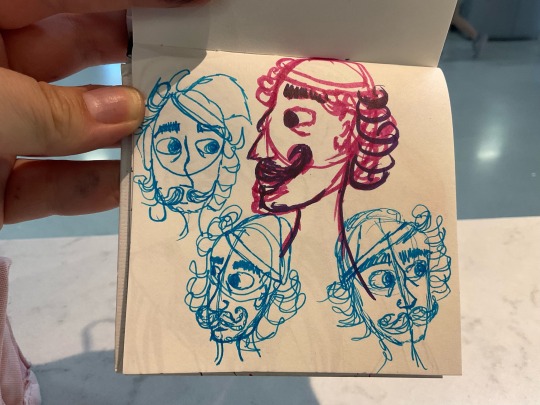
0 notes
Text
I'm convinced that by the time of BotW every single aspect of mythology or fairytale in Hyrule can be attributed somehow to some version of Link and Zelda or another. Like if there's a Beauty & the Beast esque story? 100% the result of Twilight Princess. Werewolves? Also because of Twilight Princess. Princess & the Frog? Episode 4 of the 89 cartoon. The Cobbler's Elves? Actually a side plot in Minish Cap that Link aids in. A 'Great Flood' story as is part of practically every mythology or religion in the real world? Literally just Wind Waker. The greatest and saddest love story in Hyrule in the vein of like Romeo & Juliet or the Titanic? Ocarina of Time provides several options there. The creation myth of their kingdom and the source of the royal family's Divine Right to Rule? That's actually just Hylia & First Hero and Skyward Sword Zelink's lives. The castle being haunted? Spirit Tracks Zelda was bored, and then other princesses have used that legend to get away with their own mischief. Like the entire series is called LEGEND of Zelda, so every single speck of legend in their land deserves to be their fault in one lifetime or another.
#legend of zelda#the legend of zelda#zelda#link#zelink#tetra#sheik#hylia#telink#shink#hylink#hylia's chosen hero
423 notes
·
View notes
Text
Wow. So much dislike about elves generally preferring to be barefoot in the Dragon Age world.
Y'all.
Why elves not wearing shoes in Dragon Age is completely logical.
Okay, so it’s not a huge secret that I grew up poor. We're talking hardscrabble poor. The kind of poor most people don't think even exists in the western world anymore (I guarantee it does).
To someone with very little ability to buy things, shoes just aren't the priority everyone seems to think they are. City elves are poor in most depictions.
The Dalish would likely feel they'd rather use the materials for something else. They may not be as poor as city elves, but they likely wouldn't be wasteful either. Depending on where they wintered, they might not even use them then. I go out barefoot in light snow and frost, you do actually get used to it.
Fenris is a former slave with lyrium tattoos on his feet. The tattoos cause him pain when touched. Of course he doesn't wear shoes.
I never had shoes in the spring/summer/fall. They just did not exist in my understanding of the world. There was no need to buy and ruin a pair of shoes when feet toughen up just fine.
I grew up in the Adirondack Mountains, by the way. There are a lot of bloody rocks there. You can't dig very far down before you hit bedrock up there.
We had horses and dogs too, (yes, I'm aware of the crappy juxtaposition of parents who pay for horses but not shoes) so it's not like we're talking a pristine woodland.
I'd get a pair of sneakers/runners before school started (usually second hand) and a pair of boots in the winter. I remember having to wear bread bags around my feet inside my boots to keep them dry and whole. Less likely to get frostbite that way.
I distinctly remember my first brand new pair of shoes. I remember my second and third pairs too.
Even now, when I have far too many shoes, more than I could ever need, (I've got a thing for boots, my kids tell me my collection is 'extra'. They're right 🤣) I still prefer to go barefoot. From around April to November, I just don't wear shoes unless I have to. Like, to go into a store or public area; I'll reluctantly wear proper footwear to hike in (and even then they usually wind up over my shoulder instead of where they belong) shoes just aren't the absolute necessity so many folks act like.
I'm aware of what Gaider said about it, that he blamed (unfairly) the art team. It's the director's job to approve things like that, so, uh, bad form.
Still.
It is very possible to have a strong preference for no shoes. You don't really miss what you never had. And to me, it feels like y'all wearing shoes all the time is weird and likely unhealthy. In fact, it kinda is.
"Walking barefoot helps to improve circulation which increases the nourishment of nerves, muscles, and bone of the foot and helps minimize swelling of the lower extremities. Walking barefoot may also help improve the strength and flexibility of the muscles and ligaments of the foot which improves the function of the foot, reducing injuries of the foot, and improving posture and balance of the body."
At most, for just every day, I'll wear a pair of flops if I think the terrain is dangerous enough to warrant it. That's very rarely. I do have a habit of watching where I step though.
In spring, I go out on the tarmacadam to intentionally toughen my feet up. And no, my feet aren't calloused monstrosities.
It's just kinda mind-blowing to me how essential so many people seem to feel shoes are. They just aren't.
To me, it makes perfect sense that the elves, a historically repressed and abused people (sort of like a lot of my ancestors) don't feel they're necessary.
In a medivalish world like Dragon Age, where blights or false gods or wars keep tearing civilization to pieces, shoes would be ridiculously expensive. I mean, soldiers didn't take boots because they thought they were cool. They did it for resale value.
And cobblering is incredibly skilled labour. I was lucky enough to find someone who still knew how to keep my favourite boots alive longer. That guy could make those boots look almost brand new.
But in that world, poor elves would absolutely not be likely to wear shoes.
Shoes feel incredibly confining to someone who didn't grow up wearing them. I utterly loathe the way shoes feel.
I've also been a dancer and martial artist for a large portion of my life. Two groups of people you'll frequently find barefoot.
The way you walk in shoes is completely different from how you walk barefoot.
It's also an incredibly privileged viewpoint to utterly insist shoes are necessary and that elves in a video game should absolutely have to have them.
The only thing I'm annoyed about is that the armours often include boots, which my elves just wouldn't wear. I should have a barefoot option.
It may not be strictly cannon, for the whys behind barefoot elves, but it makes complete sense.
The only elf I'll say it doesn't make sense for is Solas. Why he doesn't wear shoes could just be a big commitment to his cover of elven apostate hobo.
Or perhaps his culture didn't think shoes necessary any more than I do. That would also explain why elves could have a preference for no shoes, it could be a holdover tradition because they all descend from the Elvhen.
It's true that you develop a sense for the earth, or trees, or whatever you're walking on if you don't wear shoes. I spent a lot of time with a book in trees, because few people would climb as high as me so I was safe there. It could easily be that elves wouldn't want to lose that sense, too.
You can learn a lot about an area by what the surface feels like under your feet. If you're a hunter, it's sometimes easier to track if you know your quarry prefers a certain type of terrain. You don't need to look down if you can feel the ground.
In fact, despite what people may think, my feet are incredibly sensitive. Tough, yes, but still very 'feely'.
Point made, I'll stop blathering now 😅.
If you like my content, please consider a tip or becoming a patron. My work of words is my only income and we're living well under the poverty line right now.
KoFi: http://ko-fi.com/A630KKM
Patreon: https://www.patreon.com/KaijaRayne
Paypal: https://www.paypal.me/KaelanRhy
Amazon Wishlist (general): http://www.amazon.ca/registry/wishlist/3H8AY0GKOU0SE/
Kids' wishlist: https://www.amazon.ca/hz/wishlist/ls/C3LS40BFVFPO/
#dragon age series#dragon age#dragon age inquisition#solas#DAO#da origins#dragon age elves#DA2#Dragon Age 2#dragon age meta#Fenris
76 notes
·
View notes
Text
Elf is one of the few Christmas movies I like. Because it’s only technically a Christmas movie -ok the end is. The rest is just, the most ridiculous concept played serious for everyone else. Like peak improve basically. Probably one reason I like actual plays and absurdist comedy.
bc-
“35 year old man first human ever to be raised by Christmas elves. Who seem to have no contact with humans and neither has he -unless Santa is a human. Also elf is a species. However Christmas elves are one of three elf professions, the other two are make shoes while the cobbler sleeps and bake cookies in a tree (tree often burns down). Half the elves sound like they are from Brooklyn or something. Elves eat a diet extremely heavy in sugar. They go to elf school and do elf things, and don’t mature probably for like 50-100 years. Elves can make a thousand etch-it sketches alone in one day. Half of this is established in ten minutes with the elves. The other half by Buddy the Human adopted by Papa Elf and the cultural whiplash he inflicts on all the humans who think he’s probably just got something wrong with him because elves aren’t real. Buddy is also basically superhuman b/c he has spent his entire life failing to keep up with the elves. He can’t sleep unless a father tucks him into bed.”
… who came up with any of that?
There are of course several parts that I’d not say even aged poorly but were at the least questionable choices at the time.
11 notes
·
View notes
Text


"If I may, I have taken the liberty of writing out all the times that I have bailed you out."
"Seriously?"
"One, erased all your parking tickets from the police database. Two, rescued you from that Minotaur."
"He was only a little drunk."
"Three, nodded knowingly when you told Bo her shoes were stolen by cobbler elves."
18 notes
·
View notes
Text
left a buttplug in the bathroom sink last night and had a dream I found it cleaned and set off to the side and I couldn't decide if I should be thankful or concerned that someone had been to my flat (but possibly it was the same kind of elves that help overworked cobblers in folk tales so)
6 notes
·
View notes
Text
Fairy Tale June:The Wonderful World of the Brothers Grimm
So today we are actually going with a big movie ,a George Pal extraviganza
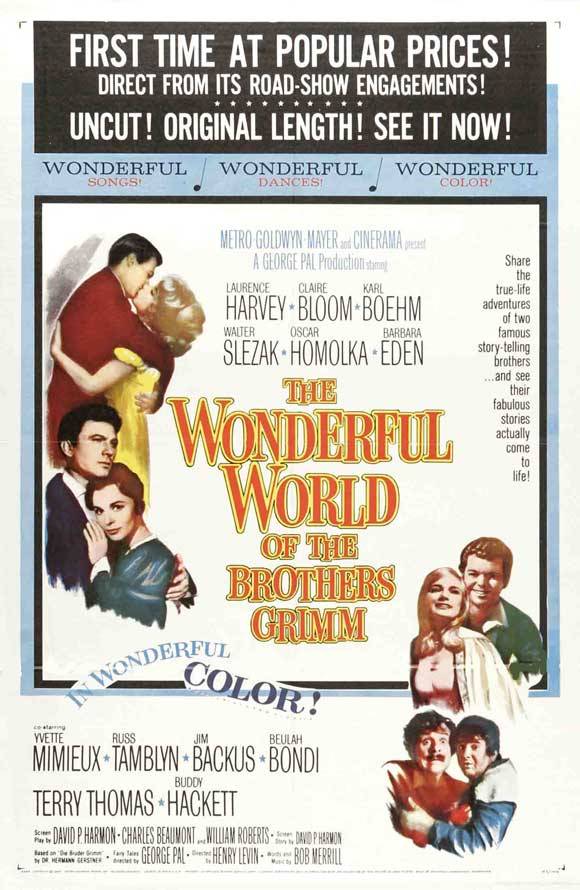
In this 1962 film we follow Willhem Grimm (Laurance Harvey), a fanciful dreamer,and Jacob Grimm (Karl Bohem ) a down to earth scholar ,as the pair is supposed to write down the family history of a Duke (Oscar Homolka) ,Willhelm gest distracted by fairy tales ,which he realizes no one has written down .....Thats the main story,what makes the film unique....is it also adapts three classic Grimms fairy tales :The dancing Princess follows a woodcutter (Russ Tamblyn) who uses an invisible cloak to discoverthe mystery to why a princess(Yvette Mimeux) always has destroyed shoes ,the Elves and the Shoemakers follows a old cobbler (Also played by Harvey ) who gains the help of some elves (voiced by Stan Freberg,Dallas Mikkinion and Thurl Ravinscroft ) and the Sining Bone where the cowardly and egotistical Sir Ludwig (Terry-Thomas ) tries to take credit for slaying a dragon that was actually slain by his servent Hans (Buddy Hackett )
SO this film is done by George PAl,producer of many Sci Fi and fantasy films ,probabbly best known for his HG Welles adaptations ,War of the Worlds and the Time Machine.In fact I kind of see this film as a spirtual follow up to his musical version of Tom Thumb ,which also had Russ Tmablyn and Terry-Thomas (In fact as well as playing the Woodsman,Tamblyn also plays Tom Thumb in a climatic sequence I will get to later ),and I think oversall,while I enjoy parts of Tom Thumb.....This film is better.HOWEVER it is still uneven to the point I didnt know if I liked or disliked it tillI was near the end,and even then.....I had to think about it
The movie is kind of two movies ,it is a bio pic about the Grimm Brothers AND a anthology of fairy tale ,and at first.....I was kind of wishing it was just the fairy tales ,and even then they arent immune to the big problem of the movie.....IT drags ,the pscing is very slow,I guess to make it 2 hours
We are gonna go by segments :
The main Grimm Brothers story on its own is dull ,it didnt feel substantial to me at first ,just Willhelm messing up and setting up the fact they will eventually write down the fairy tales ....HOwever what made it work was the performances ,LAurance Harvey was really lovable as the dreamer Willhelm,Karl Boehm is believable as the serious Jacob,and Oskar HOmolka is scene chewingly fun as the unpleasent Duke,with other good performances coming from MArtita Hunt ,Barbra Eden,Claire Bloom and Walter Slezak ....What also works is the ending which I will go into later
The Danicng Princess is fun ,showing some great physicality by Russ Tamblyn in both stunts and dancing.Now in the fairy tale its 12 Princesses but for this segment it makes sense to streamline it to one.The Highlight of this one is Jim Bakus as the murderous yet jovial King (Aided by him doing the Mr Magoo voice)
The Elves and the Shoemaker was my least favorite part of the film ,Harvey is good,but the segment was a lil dull and I willl be frank ,while I love stop motion and shall praise some later ....THE ELVES ARE FREAKY AND CREEPED ME OUT (However did notice one of them was the Yawning Man from Tom Thumb that was cute )
The Singing Bone is both the darkest and funniest tale and by far my favorite part of the film .Terry-Thomas was a comedic genius and here is perfectly cast as a villainous knight who lets his servent do all the heavy lifting .Buddy Hackett is also very fun as the unlikely hero ,I never knewI wanted to see Scuttle fight a dragon but I am glad it exists .The best part of the d scene IS the dragon,brought to life through some brillaint cartoony stop mostion,this beastie has a ton of personality,being very bored and hungry,focused on killling the two main characters ,and I love the design which is a mixture of eastern and western dragons with jewl encrusted scales
But the scene that sold me on the movie and why I reccomend the movie is Willhelms dream:Spoilers Willhelm gets very sick and in a fever dream sees Snow White and the seven dwarfs,a Giant,the Frog Prince,Tom Thumb, Rumplestiltskin,and other fairy tale characters ,who convince him to not only lived but write down their stories .Its a very sweet and emotional scene ,and I particularly like comedian Arnonald Stangs take on Rumplestiltskin as a bad tempered mean guy (I kind of wish he got his own segment ).
For all the flaws of the movie,I did enjoy it ,and if you can find it,I reccomend giving it a watch
@ariel-seagull-wings @angelixgutz @autistic-prince-cinderella @amalthea9 @scarletblumburtonofeastlondon @princesssarisa @filmcityworld1 @the-blue-fairie @theancientvaleofsoulmaking @themousefromfantasyland
6 notes
·
View notes
Text
WHY THE ELVISES COULDN'T BECOME, AND DIDN'T BECOME ENDURING MUPPET CHARACTERS
@softlytowardthesun @moonbeamelf @thealmightyemprex @fragglesesamemuppetz2 @princesssarisa @the-blue-fairie @themousefromfantasyland @amalthea9
The Elvises were a trio of characters who looked, acted and talked sounding like Elvis Presley.

The Elvises first appeared with the Muppets in Muppet Classic Theater. Due to Rizzo mishearing Gonzo state the title of the next story of “The Elves and the Shoemaker” as “The Elvises and the Shoemaker,” when the titular magical creatures come to help Kermit and Robin’s shoe shop, they appear as a group of Elvises (much to Rizzo's joy and Gonzo’s surprise). As in the original story the Elves make a bunch of amazing shoes for the cobbler, but since these are Elvises, they not only sang a rockin’ tune, they created a whole mess of Blue Suede Shoes. In thanks for their help, Kermit and Robin made the Elvises white sequin jump suits and, according to Rizzo, they went to Las Vegas where they play “The Big Room” at The Palace.
After their stint in Las Vegas, the Elvises returned in 1996 for the Muppets Tonight recurring segment “Great Moments in Elvis History” where moments in past history were retold… with Elvises. These moments include The Signing of the Declaration of Independence, The King and his Round Table, Elvis of Arabia, Tarzan of Graceland, Sir Elvis Newton, and the death of Elvis Caesar.
In their last onscreen appearance, The Elvises were featured in the full version of “Moulin Scrooge” in It’s a Very Merry Muppet Christmas Movie. There, they briefly sing “Jingle Bells,” interrupting Miss Piggy’s big “Santa Baby” number.
CELEBRITY INSPIRATIONS FOR MUPPET CHARACTERS
Going back before the Elvises were created in 1994, celebrities from the musical and acting world had served as inspirations for some Muppet characters.

Miss Piggy was originally known as Miss Piggy Lee, referencing a jazz singer named Peggy Lee, who between the 1950s to the 1970s was known for having a larger than life diva persona. When the Muppet Show camed into fruition, the surname Lee was taken out of the character, for fear that Peggy Lee would see it as a mockery of her image and file a law suit against the show, helping the character to become just Miss Piggy and turn into a big personality and huge celebrity on her own right.
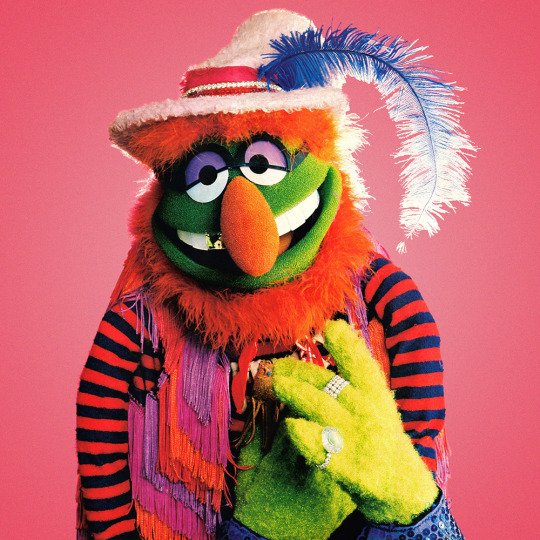
Dr. Teeth's nickname, visual style and talent for the piano and keyboard were references to a jazz musician named Dr. John, mixed to the flamboyance of rock and pop stars like Elton John and Liberace. Mixing up all those influences, Dr. Teeth can also be seen as a character with his own personality, needs and desires, rather than a clone of whatever popular musician of the past. You don't really need to be a previous fan of Dr. John to understand and enjoy who is Dr. Teeth.
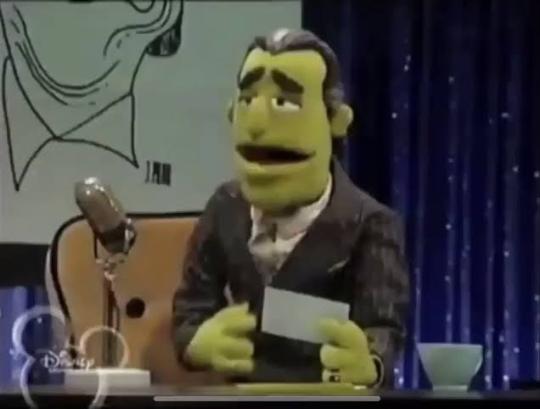
Later, in 1996, we were introduced to Johnny Fiama, a Muppet who homaged the style of singers like Frank Sinatra and Tony Bennet, with an italian-american cultural background, problems with a very controlling mother, mobster style suit, and a bit of arrogance mixed with ignorance about oversteping in other people's space that hided a hearth of gold deep down. What made Johnny Fiama win a following among Muppet fans was the fact that while he homaged a style of italian-american crooners, he wasn't a clone of a specific italian-american crooner. Like Dr. Teeth before him, Johnny Fiama was an amalgamation of several artists representatives of a style who created a life of his own.
THE ELVISES

And them there were the Elvises. A trio born out of a pun between "Elves" and "Elvis" due to how much Rizzo was a fan of Elvis Presley.
They are all called Elvis, so you won't know how to differentiate one from the other. They all only sing in the style of Elvis Presley. They all have the same hair and dress style as Elvis Presley. They all talk the same way as Elvis Presley, and they all have the same blaze facial expression.
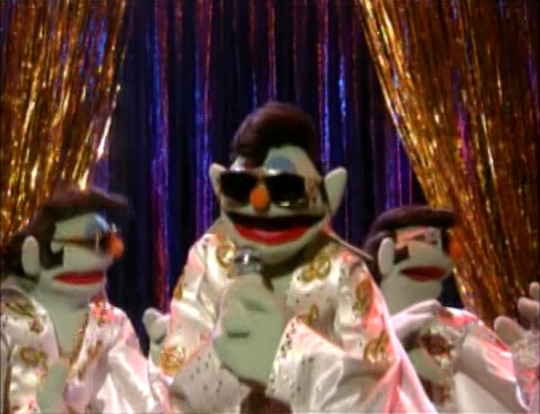
Unlike Miss Piggy, Dr. Teeth and Johnny Fiama, who are characters inspired by previous existing celebrities who developed their own sense of identity, the Elvises have literary no identity.
They are mechanical clones of Elvis Presley, with no feelings and desires of their own, wich is not good if you want to be part of a versatile, diverse and character gang of performers like the Muppets are.

They worked for the pun joke in Muppet Classic Theater, but when they were put to act in a segment of Muppets Tonight, they were the weakest part of the show!
I am glad that after that one quick scene in It’s a Very Merry Muppet Christmas Movie, they were retired for good.
May them stay in Las Vegas playing "The Big Room" at The Palace forever, and never return again.
14 notes
·
View notes
Text
the relationship between morning shift and night shift is like the fable about the cobbler and the elves but if the elves were fucking useless
3 notes
·
View notes
Text
Watching A Ray Harryhausen documentary.
Now I wanna make movies with my nendolls. I think the first one I’m gonna make is an adaptation of ‘The Elves and the Shoemaker’. What do you think of this title?:
The Cobbler and the Little Folk
Now if I only had a stopmotion kit. Maybe I can get one next month.
What say you? Should I start making Harryhausen movies?
3 notes
·
View notes
Text
The Ultimate Fables Catalogue (C)
I know, I know, I haven’t released part “B” yet. But as it turns out, I finished the part C long before the part B, so I will release this one first.
In this continuation of the “Ultimate Fables Catalogue”, I will cover a part of the spin-offs. To be precise I will take a look at the two Cinderella spin-offs (Cinderella: From Fabletown, with love ; and its sequel Cinderella: Fables are Forever), and the entirety of the Fairest series (including its graphic novel, Fairest: In All the Land).
SPOILERS AHEAD! SPOILERS AHEAD!

The Cinderella spin-offs
Cinderella: From Fabletown, with love
# The title of the series is an homage to the James Bond novel “From Russia, with love”. Cinderella’s own adventures as Fabletown’s spy evoke those of James Bond and of the Bond girls. The writer of this series, Chris Roberson, evoked the two main influences of the plot by describing the comic as “On Her Majesty’s Secret Service meets Sex and the City”.
# Crispin Cordwainer is the shoemaker from the Grimm fairytale “The Elves and the Shoemaker”. His name comes from saint Crispin, patron of cobblers and leather-workers.
# Cinderella mentions “an ogre and a talking cat”, referencing Charles Perrault’s “Puss in Boots”.
# Among the magical items found among the Mundies, Beast mentions the “seven-league boots” (from Charles Perrault’s Little Thumbling), a “horn of plenty” (the Cornucopia), a magical flute (I don’t have any specific reference for this one) and a “singing sword” (I don’t have any clear reference, though the “singing sword” concept appears here and there - it is the name of an Arthurian novel by Jack Whyte, and an episode of the cartoon “The Legend of Prince Valiant”, among many other things).
# The silhouette of the tourists are seen, and while we already know of Mowgli and Cinderella, we will discover the other two to be Feathertop (see later) and the... what was originally planned to be the Huntsman and then became a Woodsman apparently (it is one of those unclear points). Cinderella in turn has her group of three spies: Puss in Boots (who likes to be known as the “Marquis of Carabas”), from Charles Perrault’s fairytale of the same name ; Dickory, the mouse that ran up the clock, from the nursery rhyme Hickory Dickory Dock, and finally Jenny Wren, whose lover Robin Redbreast was murdered - from the cycle of nursery rhymes surrounding Cock Robin (”Cock Robin Got Up Early ; Who killed Cock Robin? ; Jenny Wren Fell Sick).
# Aladdin, and the djinn of the ring, are both from the “Aladdin” story of the One Thousand and One Nights. I suspect his driver, Farid, to be the prince Farid from the One Thousand and One Nights story “Farizad of the Rose’s Smile” - given it is the only Farid character in the Arabian Nights I know of.
# The ghuls are creatures of Arabian folklore.
# Ultima Thule (named after the legendary island of Thule that cartographers of Antiquity believed to exist north of England) is the realm of Scandinavian fairytales, especially Norwegian, filled with trolls and talking polar bears and giant elks. Its former ruler was king Valemon, from the fairytale “White-Bear-King-Valemon”. Other inhabitants of Thule include the widow Gudbrand (wife of Gudbrand from “Gudbrand on the Hill-Side”), Askelädden (the famous Norwegian folktale character known as “Ashlad” in English), Little Freddy (from “Little Freddy with his fiddle”), Little Annie the goose-girl (from the fairytale of the same name), Butterball (from the Norwegian fairytale of the same name), as well as the ram and the pig, from “The Ram and the Pig who went to live in the woods by themselves”.
# The Fairy Godmother is here another “archetype character” in the likes of Frau Totenkinder, Prince Charming or Jack of All Tales. She was the fairy godmother of Cinderella, but also alongside her sisters the “good fairies” of the Briar Rose/Sleeping Beauty fairytale, and she secretly worked to help Rapunzel by sending the prince rescue her. The Fairy Godmother’s perpetual fight against Frau Totenkinder has notably been the source of numerous of the fairytales: it seems to have started out by Frau Totenkinder “ruining” the fate of Briar Rose by playing the role of the “wicked fairy/angered wise woman” in the tale, only for the Fairy Godmother to retaliate by sending the prince of Rapunzel (whose witch-adoptive motive was Frau Totenkinder). The evolution of her role throughout the fairy tales is also explained by this perpetual duel: after sending Prince Charming to save Briar Rose from Frau Totenkinder’s curse, the witch fought back by killing the Fairy Godmother’s two sisters with poisoned apples (evoking Snow-White), which is why she was alone when helping Cinderella ; and the reason her spells only last to midnight is because her powers were weakened due to her actions in the Rapunzel story, all of her efforts exhausting her spells so that they could only work for a day and no more. It is also confirmed that the prince of Rapunzel is NOT prince Charming, as the Fairy Godmother “reused” the same prince to save both Briar Rose and Cinderella.
The Fairy Godmother is also very clearly an homage, or rather a dark parody, of the fairy godmothers of Disney movies. Her being part of a trio of benevolent fairies looking like little grandmothers at the times of Briar Rose’s birth is a nod to Fauna, Flora and Merryweather, the three fairy godmothers of Disney’s Sleeping Beauty, while her being the kind, elderly, grey-haired, plump godmother of Cinderella is an obvious nod to Disney’s interpretation of the fairy godmother of Cinderella.
# The palace being made of glass is of course a nod to the glass slippers of “Cinderella”, but I wonder if it isn’t a reference to the Norwegian fairytale “The Princess on the Glass-Hill”, or something similar...
Cinderella: Fables Are Forever
# The title of the series is again a James Bond reference, this time to “Diamonds are forever”.
# The “Shadow Fabletown”, the Soviet community of Fables living beyond the Iron Curtain and opposing the American Fabletown, is composed of Ivan Durak (Ivan the Fool, a folk character of Russian fairytales), Tugarin Zmeyevich (the Slavic character known as Tugarin or Zmey Tugarin), Meng Chiang-Nu (the character of the Chinese folktale Lady Meng Jiang), the Seven Chinese Brothers (see below), and Anansi the spider (a folkloric character from West African tales and legends)
About Tugarin Zmeyevich, the Fables Encyclopedia explains a bit more the process behind choosing this character that turns into a dragon: they explain Tugarin Zmeyevich started out as the antagonist of a folktale where he was opposed to the Rusian folkloric hero Alyosha Popovich - and in the oldest/”first” version of this folktale Tugarin Zmeyevich was “merely” a man as tall as a giant, riding a horse that had fire coming out of its nostrils and smoke from its ears. However, throughout adaptations and expansions of the tale, Zmeyevich inherited the “breathe fire and smoke” traits of his horse, and then from a fire-breathing man became a dragon. So, for the Fables comics, they decided to have Zmeyevich look like a man at first, but be able to turn into a dragon at will.
As for the Seven Chinese Brothers, the Fables Encyclopedia also brings more information: they are actually part of a popular Chinese folktale merely known as “The Five Brothers” - which became well-known in the West thanks to Claire Huchet Bishop’s “Five Chinese Brothers” in the 30s ; but there are several variations of the story where the number of brothers change, up to seven or ten. And the idea of the five brothers being actually seven was also popularized in the English-speaking world thanks to Margaret Mahy’s “Seven Chinese Brothers” at the end of the 19th century.
# Dorothy Gale, aka “Silverslipper” is from “The Wonderful Wizard of Oz”, by L. Frank Baum. Beyond her first nickname (evoking the magical “silver slippers” of the book), she is also called “The wicked bitch of the east” (a nod to the Wicked Witch of the East from the book). Numerous other characters and entities from the Oz books appear: the Tin Woodman and the Cowardly Lion (from “The Wonderful Wizard of Oz”), the Chiss, Bungle the Glass Cat (”The Patchwork Girl of Oz”) and the Spoon Brigade (”The Emerald City of Oz”). We also see in the flashbacks all four witches of Oz (Good witches of the North and South, Wicked witches of the East and West), alongside the Munchkins and the Scarecrow.
# Other pop culture references include the line “Cheshire cat got your tongue” (referencing “Alice in Wonderland”), “Are you done quoting Donny and Marie?” (the television series of the same name) and Cindy describing the relationship of Bigby and Snow White as “That whole Cheers things”, paralleling the couple with the characters of Sam and Diane from the “Cheers” show
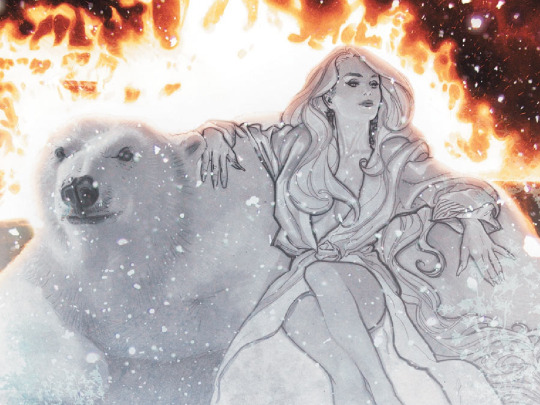
FAIREST
Wide Awake
# The main character is Ali Baba, from the One Thousand and One Nights story “Ali Baba and the Forty Thieves”. Morgiana of the same story is briefly mentionned in flashbacks. Interestingly, in the Fables universe Ali Baba went from a thief killer to the “prince of thieves” himself, something pointed out as weird in-universe. I believe it is a reference to how in American culture at the time of the comic’s release, the name of Ali Baba was so strongly associated with thieves you often saw it being reused for a thief character.
# The many modern USA culture references made by the Bottle Imp are too many for me to record them all.
# The fact of having the two “Sleeping Beauties” be a red-clad Briar Rose and the white Snow Queen isn’t just some fancy aesthetic choice. This plays on a common duality in fairytales between white and red that the comics itself already illustrated throughout the duo of Snow-White and Rose-Red. More interestingly, Ali Baba describing one as “the color of winter snow” and the other with “the color and heat of the first days of autumn” seems to be a play on the “seasonal” reading of the fairytale “Sleeping Beauty”, this analysis and belief that the fairytale actually depicts a metaphor for the cycle of seasons, Sleeping Beauty herself embodying nature falling asleep during the winter, and her awakening symbolizing spring.
# The version of Sleeping Beauty’s backstory here is quite interesting because it clashes with the one presented by the Cinderella spin-offs - a “retcon” here that is present inside the main series itself, since it began with the implications that Frau Totenkinder was the one who cast the curse, being the “evil witch” against the “three good fairies” (a la Disney), but then switched to make this new backstory canon. In this version of the story, we are more faithful to Charles Perrault’s version of the tale, since we have seven fairies gifting the child and the evil fairy being the eighth. The fairies here are actually a mix between the actual “fairytale fairies”, as in French fairytale fairies, and British fairies of folklore and legends. The seven gifts here are as such: beauty (for Katrya the Pure), wit (for Sofiya the wise - though it is the “wit of an angel”, so it is actually naivity), elegance/grace for Nyura the Graceful (which is extended to being graceful and elegant in all things... including the bedroom), walth for Ionna the Gifted, the talent of singing for Alyas the Noble (though it is “singing like a nightingale”, quite literaly, so singing like a bird), the talent of writing good songs and playing music perfectly for Yeva the Lively. The last gift of not dying but falling into an eternal sleep is given by Leysa the Defender against the curse of the evil fairy, Hadeon the Destroyer - and here, as with all magic process, we receive an explanation for the why: as it turns out, Leysa could only “split” the death curse across so many people the death became a “mere” endless sleep.
Beyond this, each of the fairy embodies a specific concept associated with fairies in general, or magic beings. Katrya the Pure is focused on purity and chastity (since her magical waters heal all knights chaste and noble) ; Sofiya the Wise is noted to have written a very famous grimoire ; Ionna the Gifted represents the “benevolent” fairies associated with darkness, since she is a daughter of the night who tames and traps nightmares (as opposed to Hadeon the Destroyer who is an “evil” fairy of darkness, shadow and fogs that rules over a typical “evil, nightmarish forest”), Yeva is strongly associated with music, merriment and parties, etc... The habit of Hadeon of turning her former lovers into objects she uses later (like into a boat) is also a very typical trope of fairy tales.
# In a flashback, Ali Baba is seen stealing from Abd al Quadir. He is a character from the One Thousand and One Nights story “Ala al-Din Abu al-Samat” (253rd night).
Lamia
# Lamia is of course the legendary monster/bogey-woman of Greco-Roman culture.
# Saint George, his sword Ascalon and the village of Silene are from the legend of “Saint George and the Dragon”. Saint George seems to embody here the archetype of the “dragon slayer-hero” since he lists other famous dragons among his list of kills: the Chimaera (not an actual dragon, but the fire-breathing Chimera of Greek mythology, killed by the hero Bellerophon), Illuyanka (a Hittite dragon killed by the god Tarhunz), Tiamat (the Mesopotamian goddess-dragon killed by Marduk) and finally Vritra (the Indian reptilian demon slain by the god Indra).
# When Beast lists the various fictional characters he becomes “like” during his various hunts for the Lamia, he mentions in order Auguste Dupin (created by Edgar Allan Poe), Sherlock Holmes (created by Arthur Conan Dole), Hercule Poirot (created by Agatha Christie), Sam Spade (from “The Maltese Falcon”) and Philip Marlowe (created by Raymond Chandler).
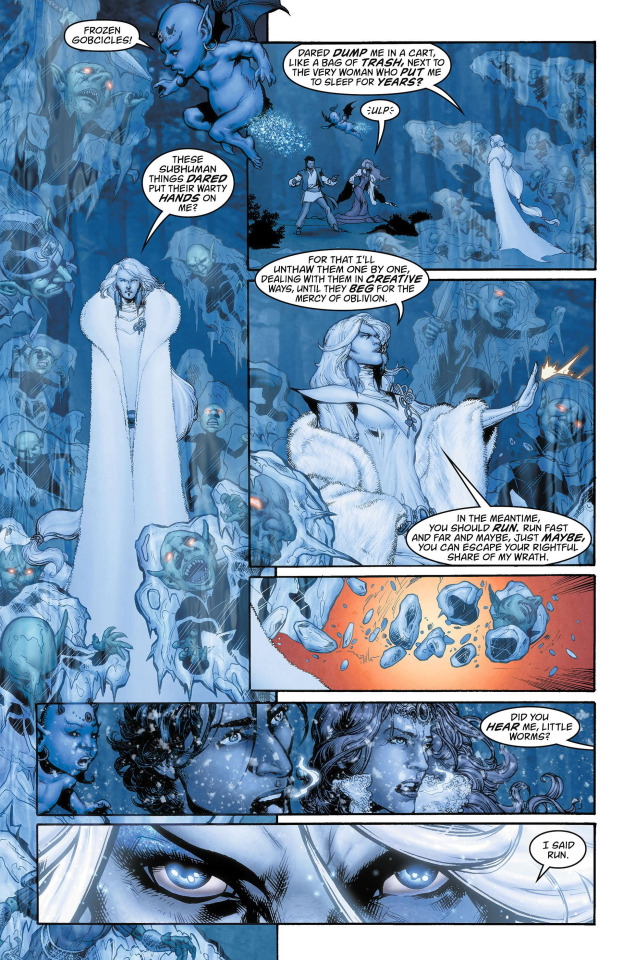
The Hidden Kingdom
# The three movies seen at the theater at the beginning are “Bunny Lake is Missing” ; “Don’t Look Now” and “Picnic at Hanging Rock”. Rapunzel later compares the flying origami attack to Alfred Hitchcock’s “The Birds”.
# This is I think the first time paintings are hidden around in the background. In Rapunzel’s flat there are two pictures on the walls: one is the poster for Kubrick’s “Clockwork Orange”, another is a reproduction of “The Lady of Shalott” by Waterhouse. Frau Totenkinder rather has in her flat Fuseli’s “The Three Witches”.
# Frau Totenkinder here appears mostly in her role of “the witch/adoptive-mother of Rapunzel”. Interestingly however, while Totenkinder is the witch that locked Rapunzel in a tower, and banished her after she slept with the prince, in the Fables continuity of the role of the witch in the Grimm fairytale got split with... the Fairy Godmother, who is revealed to have been the one preventing Rapunzel’s prince from returning to her.
# In the Japanese realm of Fables, the main characters include Mayumi (who is the Kuchisake-onna of Japanese ghost stories), Tomoko (a kitsune), a bakeneko (that just goes by “Neko”) and Katagiri (a kappa). Other supernatural beings coming from “The Hidden Kingdom”, the Japanese Homeland, include: funayûrey (ghosts of the drowned at sea), tanukis, a noppera-bo, a rokurokubi, an oni, an hitotsume-kozo, several kirin...
# When Neko first appears to Rapunzel, he imitates Totoro, from “My Neighbor Totoro”.
# Rapunzel briefly prays to the Jizo Bosatsu.
# Rapunzel, in her numerous travels throughout the Homelands searching for her missing babies, adopted several different identities. In the Hidden Kingdom she was Okiku, the famous Japanese “ghost” in the well. In the Ancient Greece equivalent in the Homelands she also played the role of Theseus, by slaying the Minotaur. And she is noted to have assisted to the “birth of an empire” by seeing twins by a she-wolf: they are Romulus and Remus, the legendary founders of the Roman Empire.
# The treacherous shogun Ryogan actually fulfills the role of both the jealous samurai who mutilated the Kuchisake-onna and the samurai that killed Okiku.
# When the Hyakki Yagyo, the “Night Parade of the One Hundred Demons” is invoked, we also see among the numerous yokai tengus, chochin’obakes, an hebi, the wanyudo, and a nue.
# Jack ends up thrown into the claws of the famous Japanese movie monster, Gdozilla.
# Lauren Beukes, the writer of this arc, listed her several inspirations as: the manga Tekkonkintreet, “The Pillow Book” ; the movies of Kurosawa, Miyazaki and Miike ; the work of the three Murakami (Haruki Murakami, Ryu Murakami and Takashi Murakami) ; “The Tale of Genji”, “Tokyo Vice” (no, not the television series, but the memoir of Jake Adelstein), and “The Illustrated Night Parade of the Hundred Demons”.
Aldered States
# The various suitors of Princess Alder include Mr. Pickles (from “The Magic Fishbone” by Charles Dickens), Trotty Veck (from “The Chimes” by Charles Dickens) as well as Farmer Giles (from Tokkien’s “Farmer Giles of Ham”).
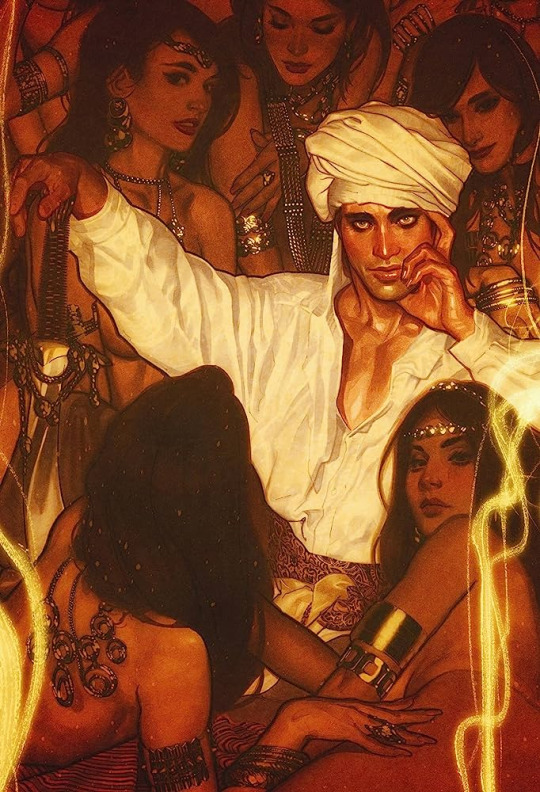
The Return of the Maharaja
# Nalayani is actually the past life of Draupadi, from the Indian epic “Mahabharata”.
# There is a LOT of characters from Rudyard Kipling’s The Jungle Book here: Tabaqui the jackal ; the dholes ; Nathoo ; Buldeo ; Pudmini...
# Prince Charming makes a reference to the “golden ticket”, from Charlie and the Chocolate Factory.
# Among beings from Indian folklore, beliefs, folktales and Hindu mythology/religion we have the asuras, the pishachas, as well as a host of Hindu gods - Rama, Ganesha, Manasa, Kamadhenu, Nandini... The Trishula trident is also important for the ending of the story.
Of Men and Mice
# The very title is a reference to the story “Of Mice and Men” by John Steinbeck.
# The cubs are being read one of the Harry Potter books - Harry Potter and the Chamber of Secrets to be precise.
# At Cinderella’s ball, the transformed mouse ends up seducing Lady Isabelle du Lac, daughter of Lord and Lady du Lac. I wonder if it is a reference to Edmund Dulac...
# I also believe the giant sentient humanoid rat-ninjas might be a reference to “Teenage Mutant Ninja Turtles”.
# The “King’s men” are the same from the nursery rhyme “Humpty Dumpty”.
# Rama is the divine hero of Hindu mythology/religion, while Varuna is... I am a bit confused because to my knowledge Varuna is an Hindu god, not a tiger-headed fish... The only tiger-headed fish I know of is the Japanese Shachihoko... This leaves me confused.
# The Rodgers and Hammerstein’s version of Cinderella is explicitely referenced here.
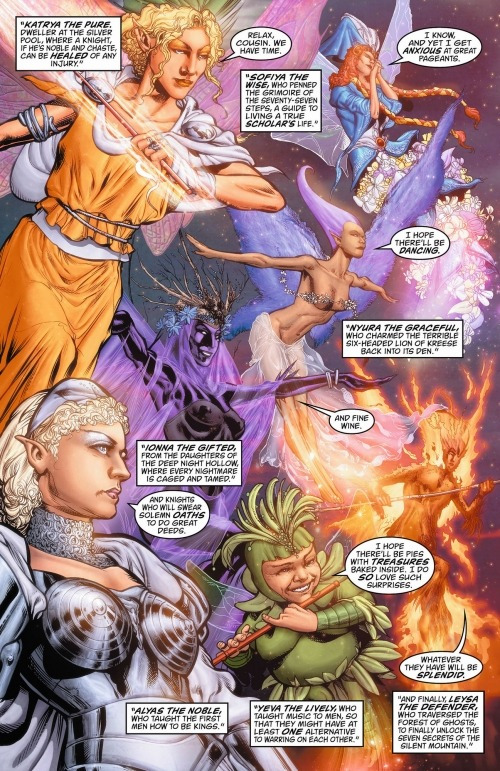
Clamour for Glamour
# Lady Maeve of Dunhollow seems to be Maeve/Mebd of Irish mythology.
# Mary, after losing her little lamb, took up gardening - and thus became the Mary from the nursery rhyme “Mary, Mary, Quite Contrary”.
# There is an entire section of the Farm called André’s Garden, where the Mean Sunflower Kid/Mister Sunflower lives, and we see here five other Fables living in this area: Snapdragon, Old Maid Hollyhock, the Dormouse Juggler, Alderman Poppy, and a woodpecker. Given this is the living area of the Sunflower, and named “André’s garden” I am pretty sure they are meant to be part of this same Victorian book of nursery rhymes written and illustrated by R. André/R. Andre from which the nursery rhyme “Mister Sunflower” comes. The problem is that I cannot have access to this specific book, which seems to not be easily available anywhere, so I cannot actually check...
In case you want to know, I will place here the Mister Sunflower nursery rhyme as it was revealed in the Fables Encyclopedia:
In your dress of brown and yellow
What a stiff-necked
Long legged fellow!
Must you stare, although the bees,
Settle on your face and tease?
Can’t you turn your big flat head
Till the sun has gone to bed?
Fairest in All the Land
# This is where Mrs. Ford was confirmed to be “the old woman at the ford in a river”, the deadly and ghostly “washing woman” from Irish beliefs and folklore.
# While not an exact reference, the seven magical swords kept in the office named after concepts (Mercy, Justice, Regret, Rage, Judgement, Love and Wisdom) are part of a long tradition in fantasy of magical swords with meaningful names (for example, take Tad William’s trilogy “Memory, Sorrow and Thorn”). The powers and nature of Maerorgladi, the Sword of Regret, is especially interesting, as its “hunger” forcing it to take a second life for each kill is clearly inspired by a famous trend of “sentient, soul-hungering swords” in fiction which was started by Poul Anderson’s “The Broken Sword” and Elric of Melniboe’s famous sword, Stormbringer.
# Hautboy/Cendrée, the wizard that created the seven magical sword, is confirmed to have lived in the Dark Tower, from “Childe Roland to the Dark Tower came”, before Roland actually arrived to said tower. The fact his main feats were creating buildings, magical chariots and magical weapons, makes him part of a long line of legendary magical smiths - in Fables, the main series, we already saw Weyland Smith and Daedalus appear, but I can also mention the Greek Hephaestus or the Finnish Ilmarinen. The Ilmarinen comparison is especially interesting, since the mythical ancestor of the evil swords I talked about (Moorcock’s Stormbringer, or Tolkien’s Gurthang) is a sentient, talking sword from the Kalevala. I have however very curious about the names chosen for him, both very French in nature... I think they might have been chosen at random (especially since “Cendrée” is actually the FEMALE form of the adjective “Ashen”/”Cindered”, the proper male form would have been Cendré), but maybe there is some obscure reference I am missing... though I slightly doubt it.
# The topic of “swords that must kill” is also very frequent in Norse sagas: to quote TV Tropes, “Tyrfing of the Saga of Hervor and Heidrek, the sword of Bodvar Bjarki in the Saga of Hrolf Kraki, and Dainsleif from the Prose Edda”. Which brings me to the hero the Sword of Regret was built for, Turgo of Nor, who is the stereotypical “Norse barbarian”. He likes in a world shaped after Ancient Norse society, and he is a muscular, bearded warrior always eating and drinking, but going berserk every time he drinks too much (which is often, since he is a drunkard). However, the fact that he keeps flying into mad rages he then regrets, and that he wears a hood made of animal pelts, make him VERY similar to Herakles of Greek mythology.
# The coat of Padarn Beisrudd is one of the “Thirteen Treasures of Britain”, part of Welsh folklore.
# The Blue Fairy mentions the “Unseelie Midwinter Ball”. The Unseelie Court is one of the two fairy “courts” or fairy “hosts” of Scottish legends, alongside the Seelie.
# I can’t help but wonder if Hadeon’s role as a sentient, magical but malevolent red car isn’t meant to be a nod to Stephen King’s Christine.
#fables#the ultimate catalogue#fairest#cinderella#cinderella from fabletown with love#comic#cultural references#fairytales#myths#folklore#cinderella fables are forever
5 notes
·
View notes
Text
BC Next Gen OCs Favorite Desserts
At last we come to the next gens' favorite desserts.
Fausts
-Sterling: layered crepe cake
-Dawn: grapefruit bars
-Dusk: candied fruits (in the style of tanghulu)
-Sirius: coffee cheesecake
-Merel: ginger cookies
-Vivian: salted vanilla/caramel/butterscotch/chocolate candies
Roulacases
-Caelum: cherry panna cotta
-Raphael: black forest gateau
Adlais
-Silver: red velvet cake
-Clara: cream puffs
Silvas
-Aecor: pumpkin pie (with whipped cream)
-Fleuriana: creme brulee
-Chalivas: dark chocolate truffles
-Soleil: salt water taffy
-Skylar: flan
-Elana: triple chocolate cookies
-Eirlys: blackberry trifle
-Ferro: macarons
-Aimee: raspberry jelly-filled donuts
-Naru: chocolate ice cream cake
-Filomina: fried dough
Hearthas
-Maris: boysenberry danish
-Neave: blueberry pie (with ice cream)
-Petrus: coconut cream pie
Deomines
-Remus: white chocolate-filled croissant
-Romulus: meringue cookies
-Fantasia: rock candy
Yamis
-Saki: matcha yōkan
-Ann: peach cobbler
-Kenzou: molten chocolate cake
-Kai'ichi: botamochi (with coarse paste)
-Shigehiro: kinako mochi
Cresswells
-Daniel: chocolate zucchini bread
-Jill: rhubarb pie
Elves
-Avery: rice pudding
-Elfrieda: bread pudding
-Alfred: tapioca pudding
Others
-Leoray Vermillion: spiced mango candies
-Cynthia Enoteca: candied popcorn
-Jesse Voltia-Swing: pineapple upside down cake
-Kohaku Shirazaki: melon kakigōri
#soda's ocs#next gen ocs#black clover oc#sterling faust#dawn faust#dusk faust#sirius faust#merel faust#vivian faust#soda asides#not finral's sons having an affinity for desserts with cherries included like their uncle!#yes all the elf sibling love a pudding of some kind#that's the joke#hngh me talking about wagashi makes me WANT them#AKJFHLAKHETIAEUHTHAEIT WHY DO I DO THIS TO MYSELF!
4 notes
·
View notes
Text
Orc Cultures
(For an explanation on how all this works plus some cultures for elves, see here. Other cultures: Dwarves)
If you take one thing away from this post, let it be this: I think orcs should get to punch God, as a treat. Violence has long been associated with orcs, if at times in some very dubious ways, and it's ultimately up to you to determine what that means for the orc cultures in your world. Is it transcendent and liberatory? Dreary and grounded in the realities of war, of long marches, sore feet, and empty stomachs? Not really a thing to begin with? I went for a 50/50 split with today's orcs - half grappling with the legacy of violence inflicted upon and by them in different ways, half saying screw that, let's have some fun forest jocks/cool crypt goths.
Weary Warriors
An orc's life is to fight and kill and die, and an orc's death is to fight and kill and die again in an endless, bloody cycle of planar warfare. So you have been told, in the brief time you knew your ancestors. So you will tell your children, if you live long enough to have any. You have grown resigned to the inevitability of violence, but it weighs on you all the same.
Common language: Orc
Pick two:
Gain proficiency in Intimidation
Gain proficiency in Athletics
Gain proficiency with warhammers and battleaxes
Gain proficiency with cobbler's tools and cook's utensils
Learn the spell False Life. You can cast it using any spell slots you have and can cast it 1/long rest at 1st level without expending a spell slot.
Vengeful Godkillers
After untold generations in the hands of a cruel and angry god, some among your number did the impossible. You toppled your god and shattered his throne, crushed his skull beneath your boots and drank of his blood. And with the taste of liberation fresh on your tongues, you turned to find a world of gods who were never there for you, who cherished their champions in their perfect, beautiful cities even as they sent them to slaughter your people. Some day, perhaps, you will learn to forgive the mortal pawns who fought and killed and died against you. But their gods? They must pay.
Common language: Orc
Pick two:
Gain proficiency in Religion
Gain proficiency in Intimidation
Gain proficiency with warhammers and mauls
Learn the Thaumaturgy cantrip
Learn the spell Wrathful Smite. You can cast it using any spell slots you have and can cast it 1/long rest at 1st level without expending a spell slot.
Sturdy Lumberjacks
Among the boomtowns at the forest's edge, orcs live and work side by side with dwarves and other sturdy folk, chopping trees and shipping lumber down the river. The elves may not like it, but it's a living.
Common language: Orc or Dwarvish
Pick two:
Gain proficiency in Nature
Gain proficiency in Athletics
Gain proficiency with handaxes and greataxes
Gain proficiency with carpenter's tools and woodcarver's tools
Gain proficiency with vehicles (water) and one type of gaming set
Speakers for the Dead
The world and its peoples are old indeed, and few more so than the orcs. These orcs live among their half-buried cities and mortuaries, tending to the honored remains of the ancient dead. Though they may appear frightening to outsiders, few can match their archival knowledge or mastery of bone and spirit.
Common language: Orc
Pick two:
Gain proficiency in History
Gain proficiency in Medicine
Gain proficiency with alchemist's supplies and leatherworker's tools
Learn the Spare the Dying cantrip
Learn the Toll the Dead cantrip
33 notes
·
View notes
Note
“Another excellent guess, but nope,” Laurel grinned, popping the P, “here's a hint, there's a misconception that we're all only a few inches tall.”
"An... elf?" Honora shot again.
Patience snorted "Elves aren't little."
"Cobbler elves were!" Honora countered gesturing at Laurel "What other being looks like a human but tiny?"
"Aaaaa brownie?" Patience hazarded as a guess.
3 notes
·
View notes